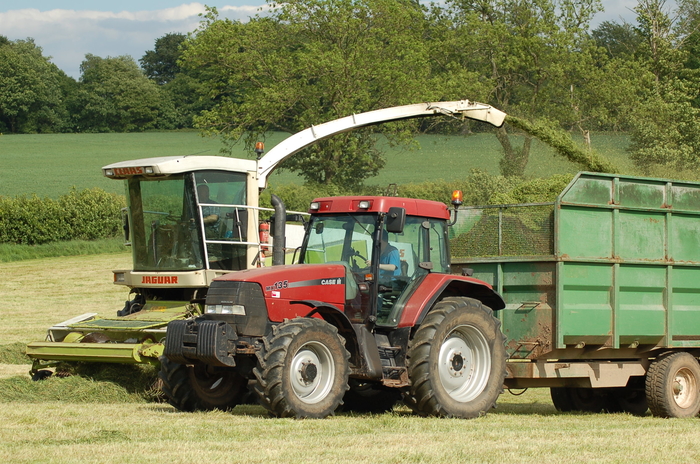Results from over 700 first cut grass silage samples analysed by Trouw Nutrition GB suggest the forages could provide the basis for efficient diets this winter but will require careful balancing.
Ruminant technical development manager Dr Liz Homer says the first cuts reflect the growing season but many farmers cutting earlier in the season have produced some good quality forage.
“Following the cold winter and spring we would expect to see higher D value forages with better energy content and this is what the analyses show,” she comments.
Dry matter is slightly lower but still within the target range. The fermentation characteristics of pH, ammonia nitrogen and VFAs indicate well-fermented crops. Overall feed value is better than last year with improved crude protein and similar ME content and D value.
NDF levels are similar to last year but with a lower lignin content. Dr Homer says that NDF levels in pre-cut grass were generally higher this year and fewer silages have low NDF content this year.
“Last year low NDF and structural fibre was one of the factors blamed for clamp slippage, so hopefully we will see more stable clamps this year as a result which will make for easier feeding out.”
Dr Homer says the more detailed NutriOpt Dairy parameters explain how silages will perform in the rumen and indicate how diets will need to be balanced to optimise rumen health and production.
“Dynamic Energy which is a more accurate measure of the energy actually available to the cow is very high this year at 6.7MJ/kgDM. This means a cow eating 10kgDM of the average silage could produce M+9.4 litres from forage, almost a litre more than from the same period last year. However, to achieve this the diet will have to be carefully balanced.”
The other issue that will affect production from forage is rumen health and Dr Homer warns that although feed quality is excellent in many cases, it will be essential to monitor acid load and fibre index closely.
“Our analysis shows there are high levels of both rapid and slow fermentable carbohydrates in the silage and care will need to be taken to avoid tipping cows over the edge and increasing the risk of acidosis. This problem will be made worse due to the low fibre index.”
She says care will need to be taken if adding rapidly fermentable energy sources like cereals. In many cases a well-balanced diet will require the addition of structural fibre, perhaps fermented wholecrop or less digestible later grass cuts. In addition after maximising energy and microbial protein from the rumen, feeds high in bypass starch and protein can be included to complement the high fermentable sources in the forage to meet desired production levels.
“This initial analysis gives some encouraging news for dairy farmers. The objective now should be to focus on making high quality forage from the remaining cuts while ensuring sufficient dry matter is produced to optimise forage intakes. Then, with careful supplementation it should be possible to formulate cost effective diets for the winter.”


